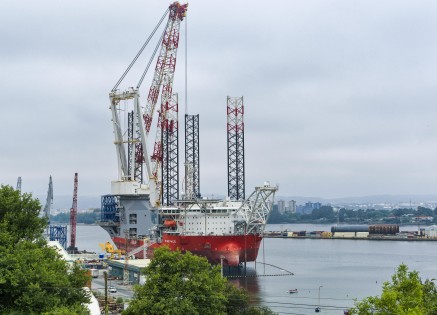Copyright © 2025 lmitac.com All Rights Reserved. Contact - Terms and Conditions - Privacy Policy - Quality Policy - Become an instructor - Vacancies - Sitemap
London Maritime Academy is a trade name for London Premier Groupversion: 2.9.0
London Maritime Academy is a trade name for London Premier Group

Posted on : 6/22/2025, 8:42:13 PM
Ever wonder what’s reshaping Maritime Transport behind the headlines? It’s not just ships getting smarter, nor is it the speeds with which a ship is transporting goods. Actually, the entire sector—from freight logistics and port operations to containers and emissions reduction—is going through a huge transformation. Let’s unpack the main trends that are key players in the world's transportation by sea and how they’re shaping the service people rely on every day.
It’s not really about tech for tech’s sake. Across Maritime Transport, smart administration systems are making operations more safe and secure, faster, and more connected. How is it being integrated? Think of ports using blockchain for cargo authentication, or fleets with AI-guided systems handling vast ocean distances. We’re seeing an extensive range of marine data collected by autonomous vessels powered by renewable energy. Such management systems reduce greenhouse gas emissions and improve cargo safety at seas while unlocking new possibilities for international shipping.
And it’s not just big names or global companies making moves for maritime transport. Smaller players are adopting container tracking systems, digital twins, and remote navigation tools to improve their logistics services. These upgrades are helping to strengthen port infrastructure, improve freight flows, and offer greater visibility across intermodal supply chains, covering road, rail, and waterborne networks.
Short answer? Yes. But it’s a complex shift. Maritime Transport is under pressure to decarbonise, be it materials, oil, green engineering, you name it, and the race is on to find practical, scalable fuel alternatives. Who's to win? The one who emits the least GHG. Some vessels are already running on eMethanol and hydrogen, while others are using wind propulsion systems. When taking a closer look, one notices that is chain of events is helping reduce the carbon footprint of international trade and proving that sustainable development is more action than talk. The return benefit? We protect the environment!
What really matters is how the whole industry moves forward. It involves emissions monitoring, green credential verification, and adapting systems to support alternative fuels. That’s why so many ships are being designed to support dual-fuel models. And slow steaming? Still a popular tactic to control emissions without overhauling the whole fleet.
Geopolitics and climate shifts are not only playing a huge role, they're in reality leading the whole experience. Just look at the ripple effects caused by Red Sea conflict, low water levels at the Panama Canal, and unpredictable weather patterns along coastal routes. These challenges force shipping companies to reconsider traditional port choices and explore alternative sea lanes like the Northern Sea Route.
That means longer travel distances, higher operating costs, and a new need for agile decision-making. It also affects everything from raw material delivery to coal, cereals, and other essential cargoes. Marine operators are now expected to pivot quickly while maintaining the safety of heavy freight vessels and their cargoes.

Absolutely. While automation might control container lifts and support fuel tracking, real-world decisions still fall to people. Marine workers, cadets, engineers, and port administrators all play a major role in making Maritime Transport work.
Shipping training courses in London aren’t just optional—they’re crucial for growth, social impact and even economic benefits. Upskilled workers who have comprehensive knowledge that goes beyond basic theory provide safety, manage risk, and lead the integration of new systems. This shift also involves improving access to education, digital tools, and real-time communication channels that support fast-paced decision-making.
Ports and shipping firms that invest in people not only improve their services but also build community trust, meet EU regulations, and retain talent in a sector that relies on deep knowledge and fast reaction times.
The strongest players in Maritime Transport are those building resilience into their business models. It’s no longer enough to move products from port to port. Companies need to manage emissions, improve cargo flows, and ensure their operations are sustainable and future-ready.
This involves securing private investment in green technology, aligning with international legislation, and supporting innovation in everything from LNG infrastructure to digital freight platforms. It also means listening to customers, building flexible transport options across sea, road, and rail, and offering services that adapt to changing global economies.
Companies that invest in decarbonisation, safety systems, and digital integration are better positioned to achieve long-term goals. They don’t just follow the news—they help shape it.
There’s no going back. The industry is evolving, and that involves everything from ocean science and port development to emissions control and digital innovation. With new legislation on the horizon and growing pressure from public stakeholders, companies need to act fast, stay informed, and lead the way.
Maritime Transport isn’t just about moving cargo anymore. It’s about protecting our oceans, reducing environmental impact, supporting workers, and providing reliable services for the global economy. Whether you're part of a coastal logistics provider, a department overseeing international freight, or a worker helping steer the world’s fleet, you’re part of a movement that’s defining the future of transport.
So the question is: will your company rise to meet the moment, or be left behind in the wake?
Key Performance Management for The Shipping Industry (KPIs)